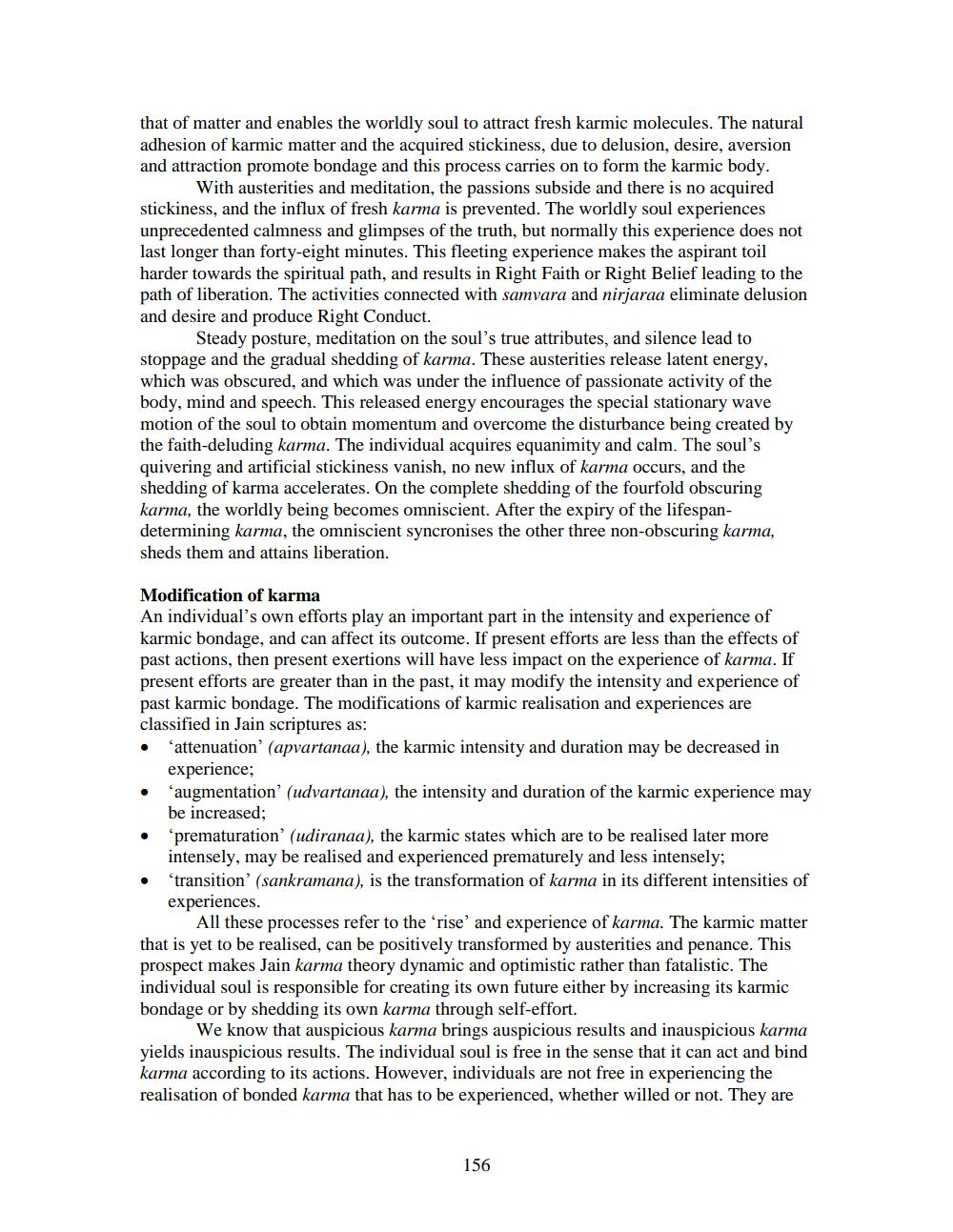________________
that of matter and enables the worldly soul to attract fresh karmic molecules. The natural adhesion of karmic matter and the acquired stickiness, due to delusion, desire, aversion and attraction promote bondage and this process carries on to form the karmic body. With austerities and meditation, the passions subside and there is no acquired stickiness, and the influx of fresh karma is prevented. The worldly soul experiences unprecedented calmness and glimpses of the truth, but normally this experience does not last longer than forty-eight minutes. This fleeting experience makes the aspirant toil harder towards the spiritual path, and results in Right Faith or Right Belief leading to the path of liberation. The activities connected with samvara and nirjaraa eliminate delusion and desire and produce Right Conduct.
Steady posture, meditation on the soul's true attributes, and silence lead to stoppage and the gradual shedding of karma. These austerities release latent energy, which was obscured, and which was under the influence of passionate activity of the body, mind and speech. This released energy encourages the special stationary wave motion of the soul to obtain momentum and overcome the disturbance being created by the faith-deluding karma. The individual acquires equanimity and calm. The soul's quivering and artificial stickiness vanish, no new influx of karma occurs, and the shedding of karma accelerates. On the complete shedding of the fourfold obscuring karma, the worldly being becomes omniscient. After the expiry of the lifespandetermining karma, the omniscient syncronises the other three non-obscuring karma, sheds them and attains liberation.
Modification of karma
An individual's own efforts play an important part in the intensity and experience of karmic bondage, and can affect its outcome. If present efforts are less than the effects of past actions, then present exertions will have less impact on the experience of karma. If present efforts are greater than in the past, it may modify the intensity and experience of past karmic bondage. The modifications of karmic realisation and experiences are classified in Jain scriptures as:
'attenuation' (apvartanaa), the karmic intensity and duration may be decreased in experience;
'augmentation' (udvartanaa), the intensity and duration of the karmic experience may be increased;
'prematuration' (udiranaa), the karmic states which are to be realised later more intensely, may be realised and experienced prematurely and less intensely. 'transition' (sankramana), is the transformation of karma in its different intensities of experiences.
All these processes refer to the 'rise' and experience of karma. The karmic matter that is yet to be realised, can be positively transformed by austerities and penance. This prospect makes Jain karma theory dynamic and optimistic rather than fatalistic. The individual soul is responsible for creating its own future either by increasing its karmic bondage or by shedding its own karma through self-effort.
We know that auspicious karma brings auspicious results and inauspicious karma yields inauspicious results. The individual soul is free in the sense that it can act and bind karma according to its actions. However, individuals are not free in experiencing the realisation of bonded karma that has to be experienced, whether willed or not. They are
156




